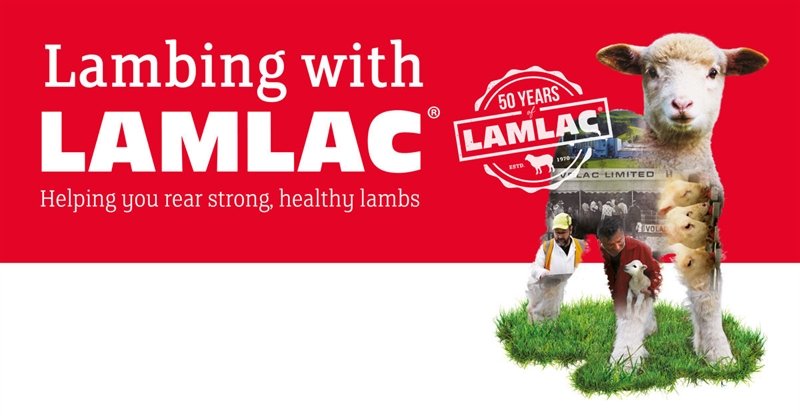
An innovative online training webinar, organised by Lamlac ewe milk replacer manufacturer Volac. Featuring a live link directly from an Essex lambing shed, has delivered some highly practical tips for rearing surplus lambs.

Special guest, qualified vet Rheinault (Reg) Jones,who is currently studying for a PhD in ruminant nutrition at the University of Glasgow, highlighted the factors affecting ewe colostrum production and what the newborn lamb needs from this liquid gold.
“Any newborn lamb needs an adequate intake of good quality colostrum during the first 24 hours of life. This essential intake of maternal immunoglobulins and other important nutrients is vital for boosting immunity to early life disease threats and promotes better lamb survival rates to weaning,” he said.
He explained that the amount of colostrum farmers should feed depends on the lamb’s energy requirements for heat production.
“Remember, a cold, wet lamb will need 50% more colostrum in the first 18 hours of life than that required by a lamb born into a warm, dry environment. However, a good rule of thumb is to work on the basis that a newborn lamb needs 200ml of good quality ewe colostrum per kg of body weight, with 25% fed as soon as possible after birth, 50% within six hours post birth and the rest fed within 18 hours of birth.”

Volac business manager Jason Short echoed Mr Jones’ comments about a healthy colostrum intake, pointing out that the newborn lamb is particularly vulnerable to infectious disease and hypothermia.
“A 4kg lamb has three times more skin area per kg of body weight compared with a 60kg ewe, so really feels the cold. Make sure you maximise colostrum intake and keep housed newborn lambs as warm and dry as best you can,” he said.
Mr Short also explained that surplus lambs – either orphans or a third/fourth lamb removed from triplet or quad-bearing ewe – can be reared highly successfully and profitably off the dam on proven ewe milk replacer.
“What’s more, whenever you take a third lamb away from a multiple-bearing ewe, you are also investing in the long-term productive health of the mother. It takes the pressure off, allowing her to use her available milk to rear the remaining two lambs more easily and effectively.
“Any surplus lambs reared on Lamlac will make you money, whether you are bottle feeding, ad lib bucket feeding or using a computerised feeder. For example, we calculate that you can expect to make between a 25-30% margin over total feed costs for every £90 finished lamb you sell, depending on your rearing system,” he said.

Volac R&D Manager, Dr Jessica Cooke, said that when it comes to rearing surplus lambs off the ewe, shepherds can be confident in the proven performance of Lamlac milk replacer.
“Effective surplus lamb rearing on Lamlac, which can be mixed cold, will maximise the number of lambs reared in flocks with a high prolificacy rate. Independent trials conducted since 2020 (four trials conducted over two lambing seasons) demonstrated that lambs reared on this proven ewe milk replacer weighed 15-19kg on average at weaning at 35 days of age. The average slaughter weight of these surplus lambs was 49kg at four to 4.5 months of age,” she said.
Following adequate quality colostrum intake, Dr Cooke advised starting surplus lambs on warm milk (25°C) until trained and then reduce the milk temperature to 20°C and even down to 15°C, if possible. Attention to detail though is important, as is fresh water and creep feed intake, which is essential for good rumen development.
When it came to practical weaning advice, Mr Short stressed that lambs should be a minimum of 2.5 times their birthweight (9-10kg).
“We always advise abrupt weaning lambs reared off the ewe at 35 days of age, provided they have doubled their birthweight and are consuming 250g of solid feed per day. If 35 day plus older lambs are kept on milk too long, they can gorge themselves, which risks bloating and other digestive upsets. Don’t be too kind to your five-week-old plus pet lambs is my advice,” he said.

Webinar participants were also able to benefit from a host of useful practical tips from Volac business manager Howard Gilbert, who broadcast live from the Essex flocks’ rearing pens.